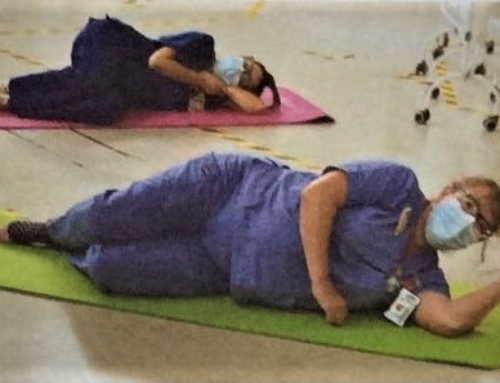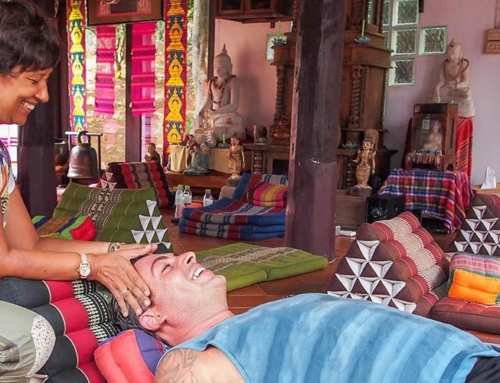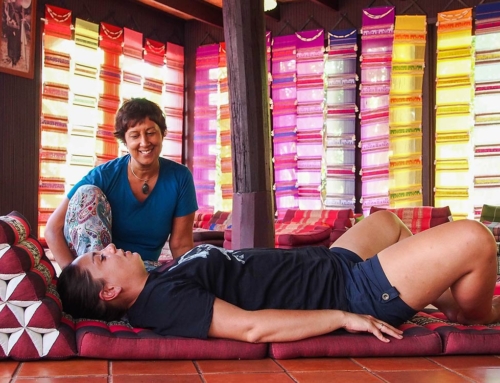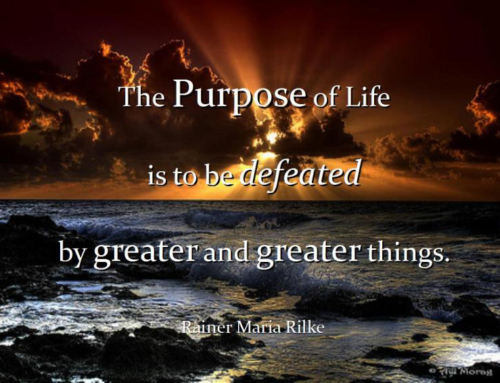A lesson from a “strong” single woman: Why working on yourself may not always work out….

For most of the last twenty years I have been an avid exponent of “self-development”- I’ve shouted, danced, sang, re-birthed, vision-quested, joined dozens of work-shops, had endless hours of therapy and cried oceans of tears. And yes, I’ve reaped the benefits- I feel more confident in myself, I am able to establish healthy boundaries and have little problem with communicating when a problem arises with someone. However I’ve been single for the majority of my adult life. That is a very hard thing for me to admit to but it’s the truth and I’m writing this article in the hopes of shining a light into what I’ve recently discovered in the hopes that it may help others too.
My early experience with relationships was with the classic “bad boy” let’s called him Derek. Derek was older than me, good looking, arrogant, charming and treated me horribly. And I lapped it up. With the 20/20 of hindsight it’s so easy to see- my sense of my self-worth was non-existent and he mirrored this back to me. At the time I remember the huge rushes of adrenaline when I was with him that I thought was “love” but I now see this as my body going into a state of high alert.
Dr Harville Hendrix explains this best in his book “Getting the love you want” with his Imago relationship theory:
“Our unconscious need is to have our feelings of aliveness and wholeness restored by someone who reminds us of our caretakers. In other words, we look for someone with the same deficits of care and attention that hurt us in the first place”
Basically we fall for people who remind us of some of the qualities of our primary caretakers, often the opposite sex parent; and so we attempt to get from them what we never received from our parent- the love, approval and validation that was often missing. However it is likely that the person that we fall for also contains the very same wounds and defences that were present in our caretaker and so we fall back into our original patterns of not getting our fundamental needs met. And so the cycle continues.
Luckily for me I was able to step outside of this cycle by becoming heavily involved with a personal development organisation called “More to Life”. Within its teaching I learned to find my own strengths and establish healthy boundaries, saying “No” became a source of pleasure rather than fear and I could finally develop a more loving relationship with myself.
However what I can now see, again with the benefit of that wonderful hindsight, was that I was rather too keen to become “strong” to be “independent” for this took away the fear of dependency, the fear of being suffocated within a relationship, the fear of being rejected and abandoned. Again it’s important to note that none of this was felt on a conscious level, on a conscious level I was only aware of my huge yearning to be in a loving relationship and the immense feelings of sadness and grief to not have this in my life.
I replaced a lack of self worth with a now over inflated need to look after myself. If someone didn’t give me what I wanted, I’d tell them- after all wasn’t this what I’d been taught? To look after myself and voice my needs rather than keep them hidden? I went from being timid to being dominating and wondered why my partners didn’t appreciate my new found voice.
What I didn’t realise was that underneath all of my desire for relationship, for connection, for intimacy existed an even deeper and unconscious terror of these very same things. My early life experience had been difficult, sent to live with my Finnish Grandmother at 3 years old, at the age when secure attachments are formed, I had very ambivalent feelings about being connected to people. My experience had shown me that at any moment people could leave and that feeling was horrible. Better not open up and risk that horror.
There is much written about this phenomenon within the psychology of attachment. Attachment theory looks at the early life connections formed between a baby and her primary caregiver, usually her Mother and the life-long patterns that this primary relationship will foster. When a child feels safe and that she is attuned to, i.e. her needs are acknowledged and fairly consistently met then secure attachment follows and subsequent relationships are relatively easily maintained. If however a child does not have her needs met or are met in an inconsistent manner then insecure attachment follows, often with a life-long pattern of both needing and fearing relationship.
It has been a long journey for me to finally admit to this truth. My cloak of strength and independence has offered me much pseudo-confidence over the years and it’s a frightening proposition to relinquish its protection and admit to the fears that lurk underneath its surface. However it’s also true that what I deeply long for- true intimacy and connection can never be achieved when I’m unable to be intimate with myself and with my own fears.
Another important lesson I take with me is that self-exploration is a continual process of unfolding and excavating. The human psyche is incredibly complex, ever shifting and not to be easily pinned down. The requisite tools needed are a willingness to let go of any pre-existing beliefs and to bring true curiosity to my present moment reality. “What’s really going on for me?” “What am I refusing to see/acknowledge?” “If I was counselling a friend with the same situation as my own what would I say to her?”
So I write this article to any of you confounded by both a deep longing for relationship and a seeming inability to achieve it. Maybe, just maybe you’re actually really scared of what relationship may bring and hopefully I’ve given you enough of an insight to actually peer and look more closely into your hidden fears.
As Jung so wisely writes, “One does not become enlightened by imagining figures of light, but by making the darkness conscious.”
Image: This Long Road I Travel by Welsh Dragon









Beautiful Samina. Thank you for sharing this with the world. It opens up a lot for me. I had a 22 year marriage that ended 4 years ago and I have not been with anyone intimately since. Having read this, it has shone a light on my own intimate issues. Not just about how to move forward from the end of my marriage, but more importantly for me, what were my expectations and what did I learn from the demise of my marriage. I tend to have similar over-inflated needs to look after myself too, and up until now I thought that that was okay. I hadn’t thought before now, that having that quality could be a detrimental factor of not having intimacy in my life. Wow! A lot is coming up for me now. Thank you.
Hi Lyn,
Many thanks for your comment. Please don’t be too hasty to judge any tendency you have to look after yourself. I think this is probably a necessary stage to go through, especially when we haven’t really done it before. I think what is useful is also to consider how we impact those around us…so that we don’t go from one end of the continuum to the other- i.e go from never considering our needs to only considering our needs.. Hope this makes sense.
Kind regards,
Samina
You are a brave, lovely, and loveable woman Samina! Thank you so much for sharing this. I’m so grateful to know you, and wish you true happiness. xxx
Thanks Kim. So very happy to know you too.
Best wishes,
Samina
right there with you thanks for being so honest samina
thanks for being so honest samina
Hi Kelly, Great to hear from you. Hope all is well in your world- and where in the world are you now?
Best wishes,
Samina
Yeah, totally ironic that we can have fear of having something as well as fear of not having it, and both can counter against each other at the same time, keeping us in a kind of stranglehold where we end up both intensely desiring something as well as seemingly unable to achieve it. We crave it, we “need” it…we feel helpless and empty without it… and yet life seems to deny us it at every turn.
To see that there are 2 forces at work, acting against each other, is a huge conscious realisation and a big step in removing the obstacles to our growth.
It’s not just relationships – it’s the same 2 forces at work, time and time again, with every problem, every phobia, every compulsion, obsession, addiction…
Fear causes desire (attraction), and fear causes resistance (repulsion).
And the two fears, although seemingly opposite, are in fact the one, same fear.
You cannot act on one without acting on the other.
For example, self-development itself…
Fear (of not being good enough) creates desire to become better…to improve ourselves.
But THE SAME FEAR is exactly what stops us from improving. We try and we fail. We try again and fail again…
We keep trying and failing, again and again, until the frustration becomes too much…
So we give up. We surrender.
And then (and only then), we achieve.
Ironic?
Hi Joss, Many thanks for your comments. Oh yes, us human beings are so utterly complex and confused. I don’t know if you’re familiar with A Course in Miracles? Within that the basic premise is that we only act out of love or fear- that’s it, all human feelings and actions can be reduced down to these two basic motivations. Although so simplistic this does make sense to me. Wonder what you think?
Best wishes, Samina
Yes, absolutely, there are only two basic motivations in life – Love or fear. I’m not sure what it says in A Course in Miracles but I’m experiencing that Love and fear are both two sides of the SAME energy. You cannot have one without the other. If you try to increase one, you just increase the other. Same goes for avoidance; if you try to avoid fear, Love just avoids you.
The day I truly realised that, to the point of putting it into practise and allowing myself to be afraid…embracing the experience… The day I started “loving fear” was the day it all slowly started to click into place. Life hasn’t got any “easier”, as such, but the intensity has become a whole lot richer. The two extremes have become ever-more polarised – deeper into fear, deeper into Love… deeper into experience Itself.
I don’t know why I’m saying this to you, when you clearly know full well how to observe your fears face to face. I liked your article; it resonates sincerity… humility…
There is also the sense of “trying”, earnestly, to achieve something or bring about some sort of inner-outer transformation in your life.
I just wonder where THAT motivation is coming from…
Great article. I enjoyed it and thank you for sharing so vulnerably. Interesting that you would write that “working on yourself doesn’t always work out”. I just wanted to ask you.. what does “Working out” mean to you? Is it always the husband, the life partner.. will that be when it’s worked out? Perhaps your life challenge in this lifetime is not the partner but the inner peace, the tranquility and the sense of knowing who you are unshakeably in spite of all that has happened to you. I wish you a joyous journey to get there and (if you so desire) a partner to do it with.
Hi Erica, Thanks for reading my post and for your thoughtful comments. I completely agree that my ultimate “goal” is not necessarily about being in partnership. The title was really in reference to how sometimes when we “work on ourselves” we tend to not necessarily be working on the thing that may ultimately help us…kind of like the story about the man looking for his car keys under the street light and being asked “is this where you dropped them” he replied “no, but this is where the light is”…so in the same way we can “work” on things that are relatively easy for us, without really getting to the places that may be most useful. Hope that clarifies my position. Best wishes, Samina
Very moving Samina, I hope your new home and life are giving you the contentment to think about things we usually avoid…. Love, Vincent